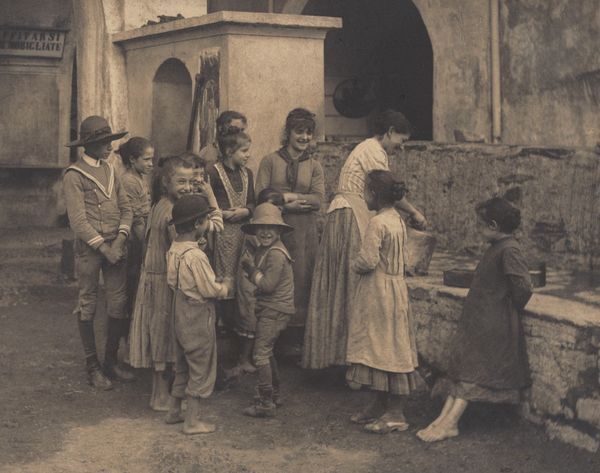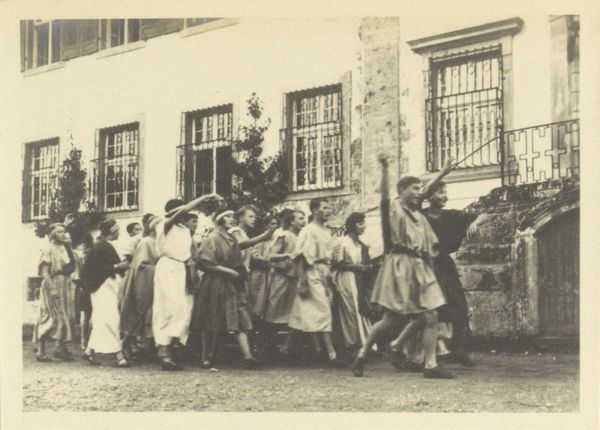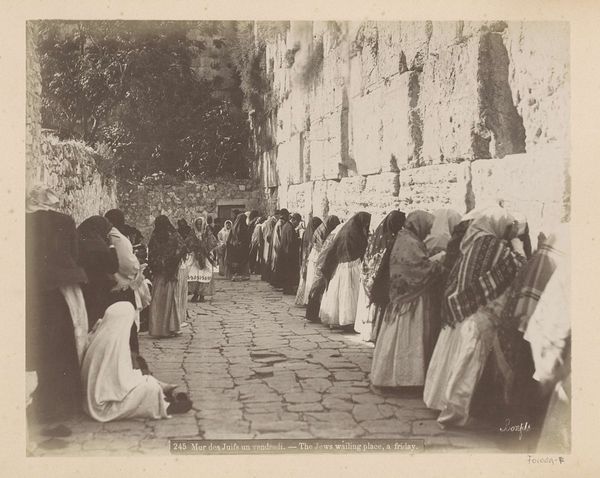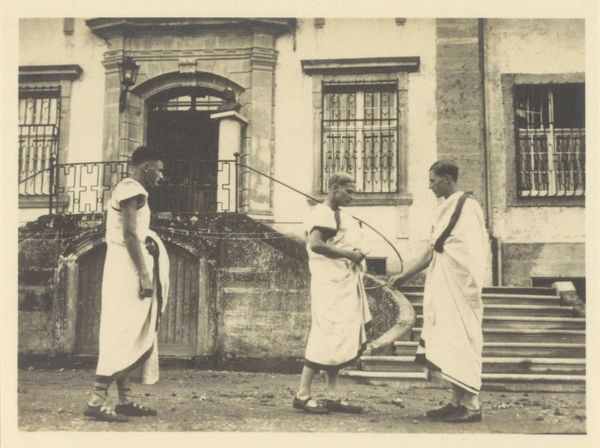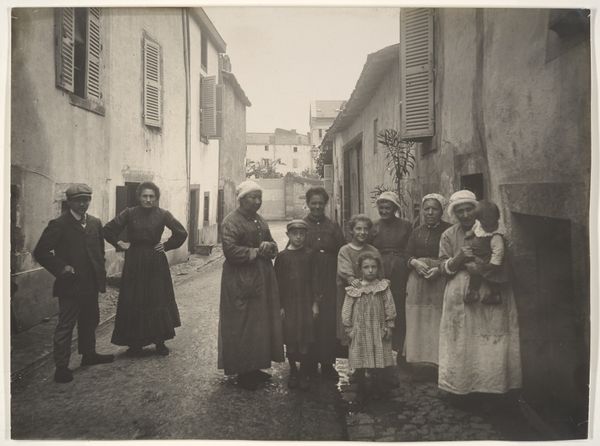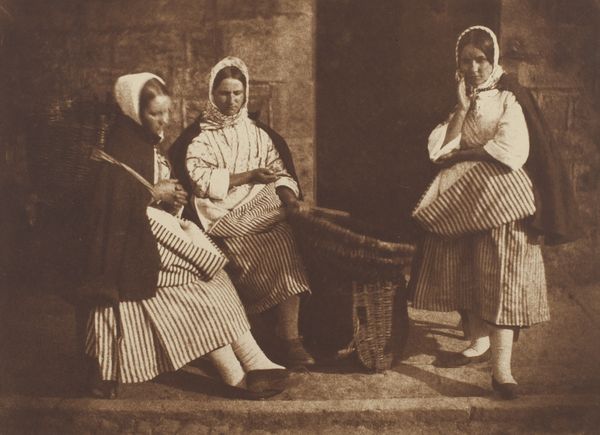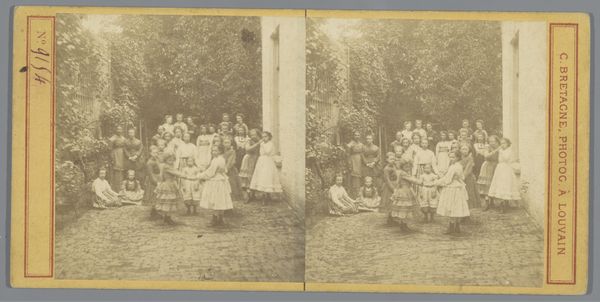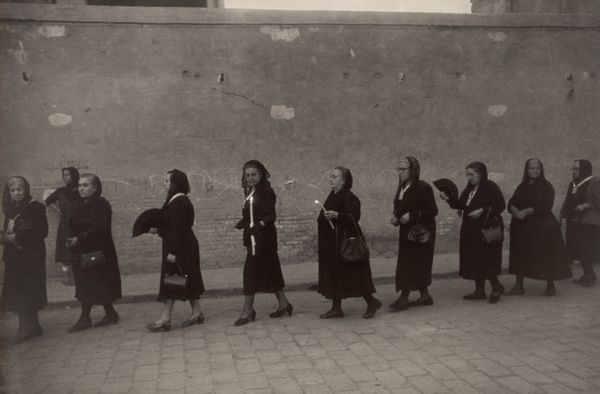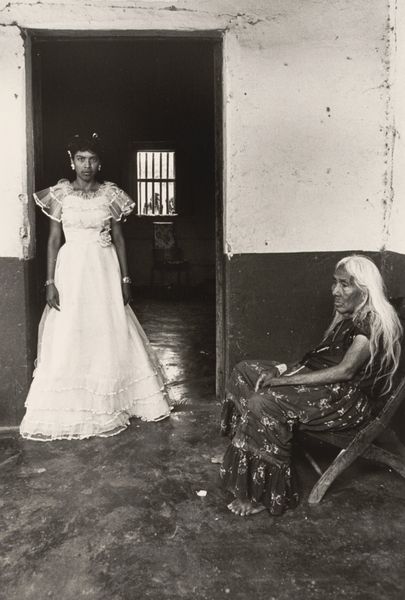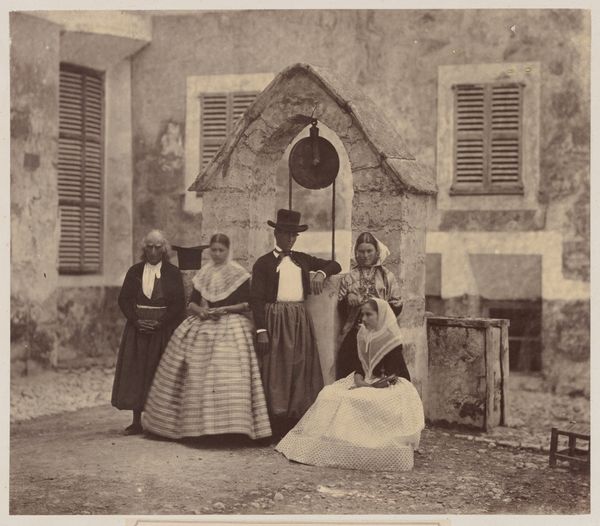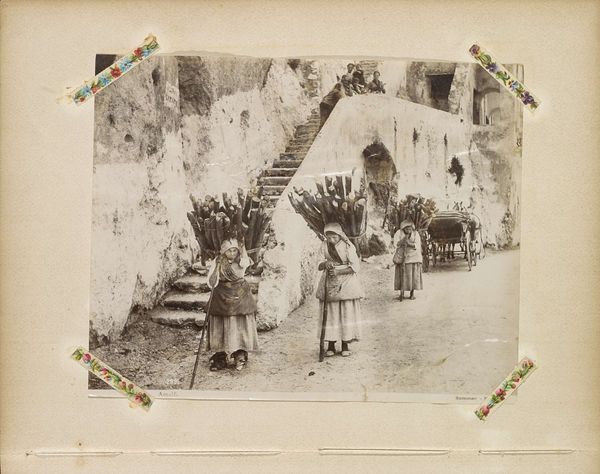
Dimensions: image: 27.1 x 33.1 cm (10 11/16 x 13 1/16 in.) sheet: 27.2 x 39 cm (10 11/16 x 15 3/8 in.)
Copyright: National Gallery of Art: CC0 1.0
Curator: Robert Frank's "Communion/Valencia" captured in 1952 is a compelling gelatin silver print. The setting seems both intimate and grand, focusing on a group of children. Editor: There's a starkness that pulls me in. It is immediately about class. A monochrome photograph can make it easy to miss how access affects celebrations like communions. The dark shadows and almost severe faces of the children really get to me. Curator: Yes, the symbolism here is striking. White, of course, representing purity, innocence. This visual echoes centuries of religious art, linking the personal spiritual journey with collective tradition. These young ones become vessels of continuity. Editor: But think about that "purity". What is purity? How do patriarchal structures exploit the iconography of women through these rituals of the church? There is almost an imposed performance here, where childhood seems lost under these prescribed rules. Curator: It’s true, the context adds another layer. This was post-war Spain. The visual silence could speak volumes about Franco's regime and its impact on everyday lives, where traditions are embraced perhaps to uphold national pride amid repression. Editor: Exactly. And the blurred figures in the foreground, as if Frank didn't give them the opportunity to "perform" adds to it. You sense he is revealing what official displays omit—the complexity of human experience during that specific moment of political repression. Curator: Even just considering it as a piece of street photography, Frank’s choices are interesting: capturing this communal moment from eye level, blurring others and focusing on only a few. This enhances an emotional intensity and sense of cultural importance. Editor: Precisely. By framing the picture with what one does not "expect" he puts forward a visual critique. In many ways he turns a seemingly traditional event into a quiet indictment of its socio-political setting. Curator: That shadow really throws everything we know to question and there really could not have been a better point in time, and choice of subjects than what he had created here. Editor: Overall, it prompts us to interrogate, not just to see. And in that act of interrogation we find the real richness.
Comments
No comments
Be the first to comment and join the conversation on the ultimate creative platform.
